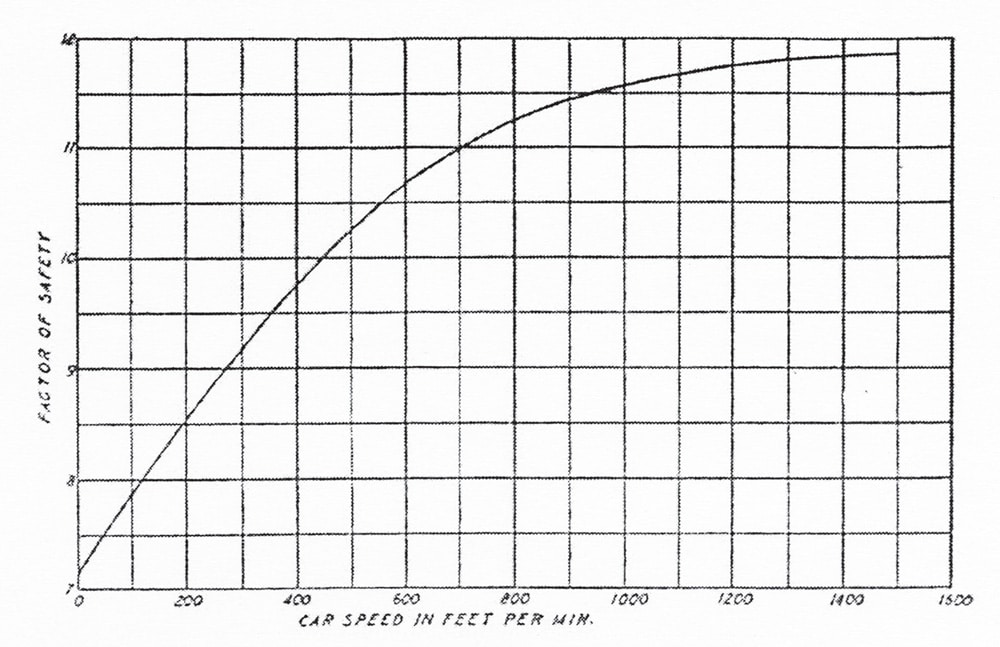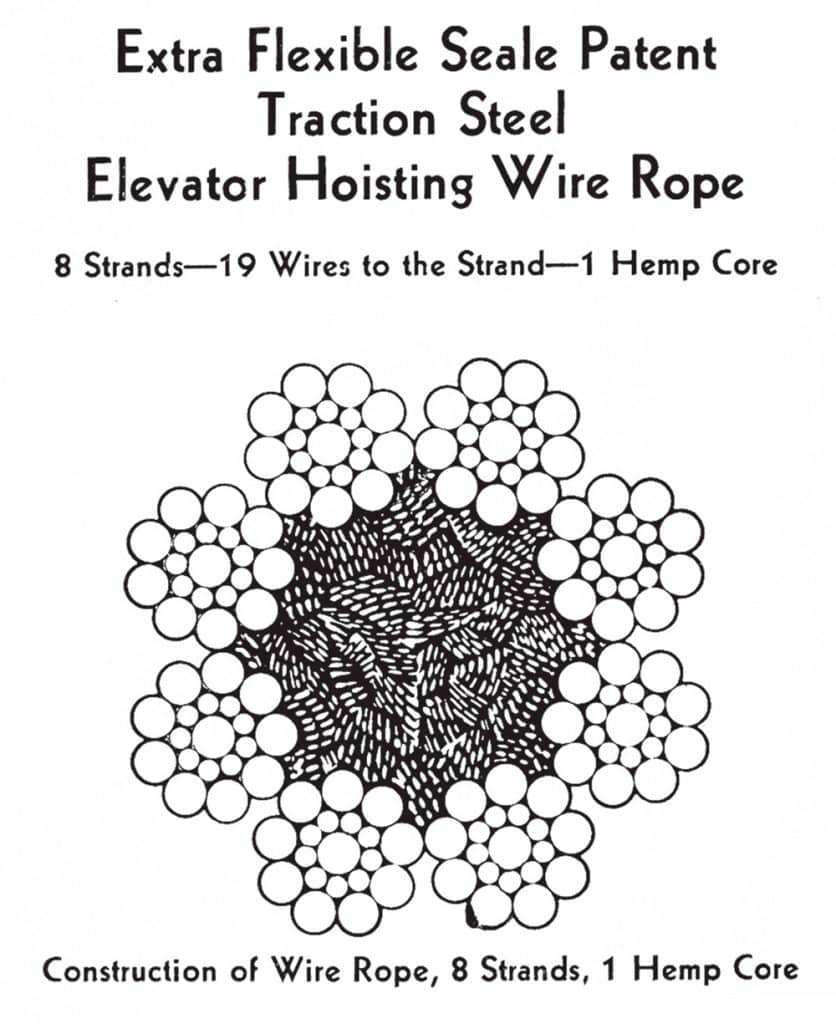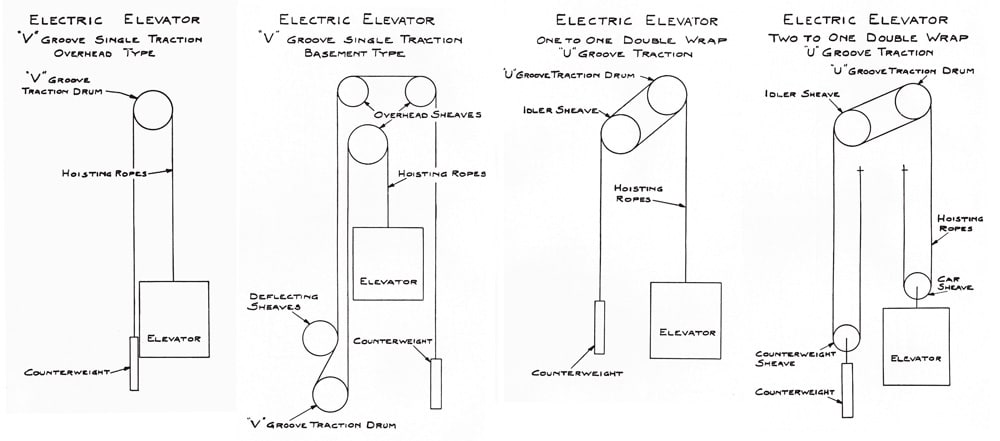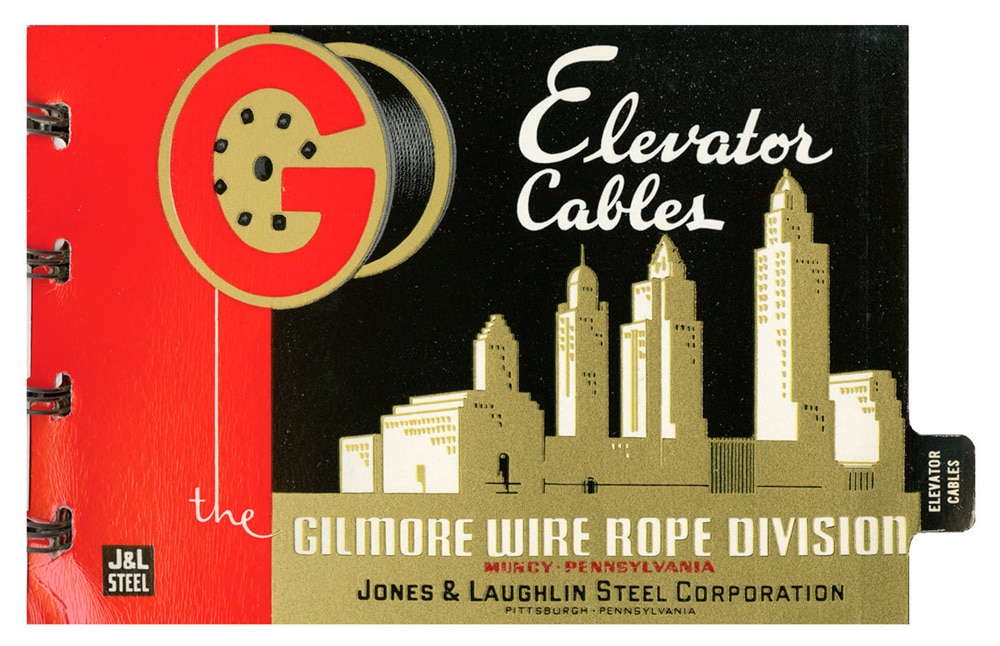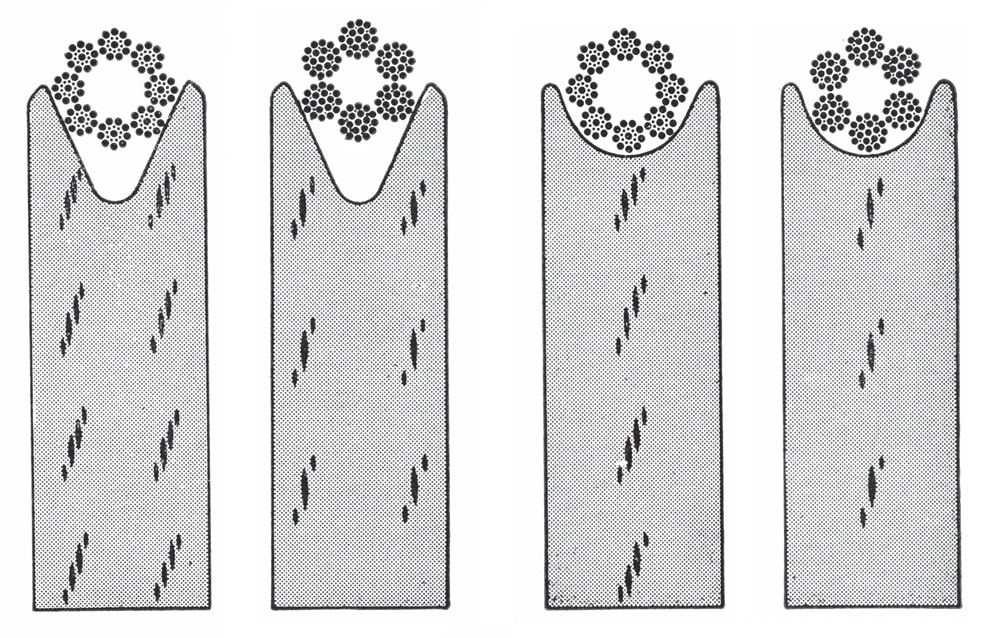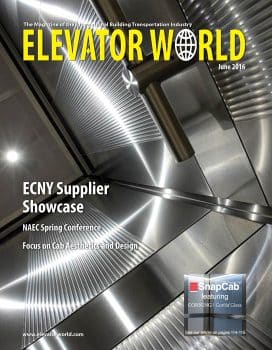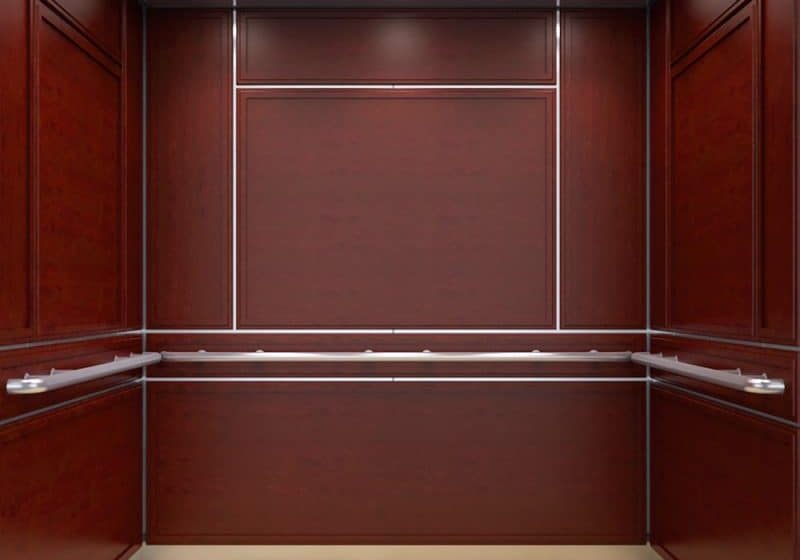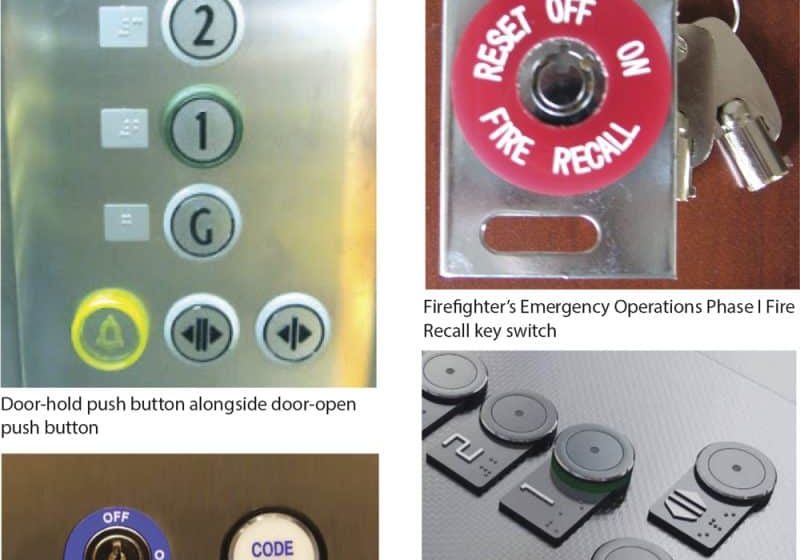A Brief History of Elevator Wire Ropes, Part Two
Jun 1, 2016
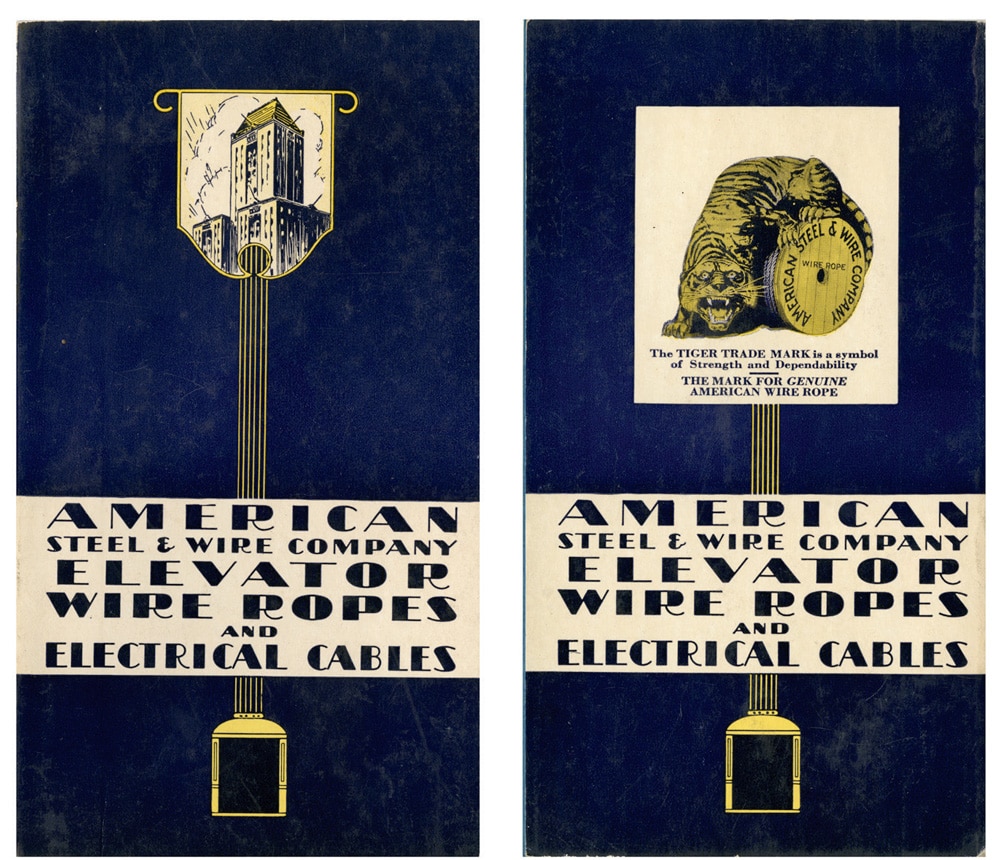
New developments and the focus on safety in the early 20th century brought lasting change to hoisting means.
The history of wire ropes in the 1920s and 1930s encompassed the continued development of the traction elevator and the writing of the first elevator safety codes. This period also saw the publication of catalogs devoted to elevator wire ropes. American Steel & Wire Co. produced such a catalog in September 1930, which was revised and reissued in June 1932. The catalog’s cover featured a stylized car supported by six ropes that led upward into a 1930s setback skyscraper. The back cover also included the car and rope image; however, here, the building was replaced by the company’s Tiger trademark (Figure 1). American Steel & Wire described its products as follows:
“Due to the increase in height of modern buildings and the consequent necessity of quick, quiet, safe and efficient service required for the transportation of its tenants up and down, elevator manufacturers have been compelled to design new machines having quick acceleration, high speed and smoothness of operation combined with safety. We, as wire rope manufacturers, have kept pace with these improvements in elevator design and are producing elevator wire ropes, which, for safety, silence and comfort, are preeminent in this field.”
This statement is of interest because of the repeated use of the words “safe” and “safety,” which occurs three times, and references to noise. Passenger safety was a constant industry concern, and the issue of machine or system noise during elevator operation had been a topic of discussion since the 19th century. The use of wire ropes in high-speed elevators had apparently created a new source or type of noise, which was occasionally referred to as the ropes “singing” when the elevator was running.
American Steel & Wire’s catalog included illustrations and descriptions of a variety of wire ropes for use in hydraulic and electric elevators. These included a new type of rope composed of eight strands, 19 wires to the strand, all of which were wrapped around a hemp core (Figure 2). This rope was described as a Seale Patent rope and its design was based on Thomas Seale’s 1885 patent “Wire Rope or Cable” (U.S. Patent No. 315,077). It was identified as the company’s “Extra Flexible Traction Steel Elevator Hoisting Wire Rope” and:
“. . . designed to give maximum resilience, flexibility and tractive effort, combined with smooth running qualities. This rope gives exceptional service on all ‘U’ and ‘V’ groove traction elevator installations. . . good contact and minimum slippage, which, in turn, decreases wear on both the rope, and the sheaves and drums.”
This rope was an improvement over the original elevator wire rope that was composed of six strands, 19 wires to the strand, wrapped around a hemp core. American Steel & Wire still manufactured the 6 X 19 wire rope, which was now identified as its “Traction Steel Elevator Hoisting Wire Rope Type N” and intended as an “alternate for traction elevator service.” While it was described as less expensive and as operating “effectively where sheaves and drums are comparatively large and speeds moderate,” it was also described as having “less flexibility and tractive grip.”
Following the precedent of its 1913 catalog (“A Brief History of Elevator Wire Ropes, Part One,” ELEVATOR WORLD, May 2016), American Steel & Wire included a series of roping diagrams that addressed a wide range of elevator types: direct-, vertical- and horizontal-plunger hydraulic machines, electric drum machines and traction machines. The latter group included overhead V-groove single traction, basement V-groove single traction, one-to-one double-wrap traction and two-to-one double-wrap traction machines (Figure 3). While these drawings lacked the graphic quality of their 1913 counterparts, they effectively demonstrated the continued development of traction elevators.
In 1938, the Gilmore Wire Rope Division of Jones & Laughlin Steel Corp. published a catalog titled “Ropes for General Purposes.” The colorful catalog was divided into sections by tabs that addressed the various ropes they manufactured. The tab labeled “Elevator Cables” featured a skyline filled with setback skyscrapers typical of 1930s America (Figure 4). Jones & Laughlin described the current situation and its products in much the same terms as American Steel & Wire:
“Present-day high-speed elevators are making more exacting demands upon cables. To meet these conditions, it has largely been a metallurgical problem. The chemical and physical properties of steel for traction-type elevator cables must equal as nearly as possible the drums so that the grooves may receive minimum but equalized abrasion to get longer life and best results. The consensus of opinion among engineers is that the 8 X 19 traction cable gives better results than the 6 X 19.”
However, unlike its competitor, Jones & Laughlin did not include roping diagrams. The company featured an illustration of a traction machine with an overlaid promotional caption: “Elevator cables must safeguard the lives of humanity. They deserve the utmost care, and humanity deserves the best cables. Don’t skimp on quality” (Figure 5). The catalog also included a “graphic illustration” of “the relative action of 6 X 19 and 8 X 19 elevator cable in both “U” grooves and “V” grooves,” which illustrated that the “8 X 19 construction shows approximately 40% more contact” (Figure 6).
While wire-rope manufacturers were gradually providing more information about wire rope and its use in the latest traction elevators, the elevator industry was writing the first editions of the ASME A17.1 Safety Code for Elevators and Escalators. The first edition (1921) established the basic framework for wire-rope rules. Section 23: Cables and Signal Systems for Power Passenger Elevators included Rule 230: Cables, Rule 231: Cable Equalizers and Rule 232: Signal Systems. Rule 230 was divided into sections that addressed basic information on cables (car and counterweight cables, capacity plates, factors of safety, and winding drums), as well as methods of splicing cables, making return loops and socketing cables. The required factor of safety, and the diameter and number of cables were governed by rules 230d and 230e:
“230d: The factor of safety based on the static loads for the car and counterweight cables for power passenger elevators shall not be less than the values given in Figure 4, corresponding to the rated speed of the car.
“Rule 230e: The number and diameter of the cables are determined by using the factor of safety found by Rule 230d, together with the ultimate strength of the cable. The computed load on the cables shall be the weight of the car, plus its rated load, plus the weight of hoisting cables and the compensation.”
The figure referred to in rule 230d was a table titled “Factors of Safety for Hoisting Cables for Passenger Elevators,” which listed a top speed of 900 fpm and had factors of safety ranging from 6 to 11 (Figure 7). The only reference to traction elevators found in Section 23 was a note below the table: “It is recommended that traction-machine passenger elevators use factors of safety 25% in excess of the values given in this curve to allow for wear on the cables.” By 1931 (the code’s third edition) the factor of safety range had shifted from 6 to 11, to 7 to 12, and the maximum operating speed was 1,600 fpm (Figure 8). However, the rest of Section 23 remained essentially unchanged from the first edition.
The conclusion of this brief history will examine a 1946 wire-rope catalog and changes in the A17 code that occurred due to the continued use of high-speed traction elevators.
Get more of Elevator World. Sign up for our free e-newsletter.
